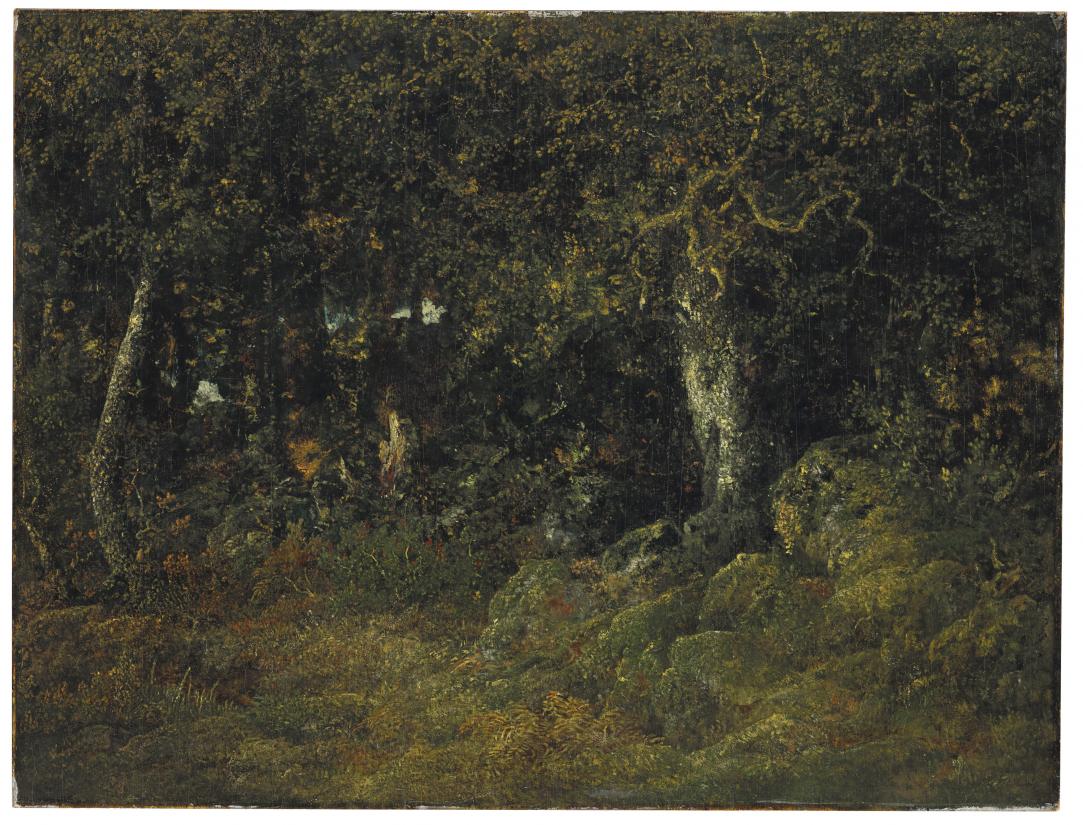With the acquisition of Le chêne de roche the Glyptotek adds an iconic masterpiece by Rousseau to its collection. The painting dates from 1860, and as early as the following year, Rousseau presented it at the prestigious Paris Salon. The painting is of key importance for our understanding of the artist’s technique and view of nature.
Le chêne de roche, which is painted on wood and measures 88.9 x 116.8 cm, was exhibited at the Glyptotek in 2016 as part of the special exhibition ‘Théodore Rousseau. Unruly Nature’ (2016 –2017), created by the museum in cooperation with The J. Paul Getty Museum in the United States. Now, the painting will be included in the Glyptotek’s permanent collection.
Rousseau in the Glyptotek’s collection
‘The addition of this particular piece to our collection greatly enhances the Glyptotek’s ability to exhibit and demonstrate the full range of Théodore Rousseau’s oeuvre, from the loosely painted, almost unfinished sketches to meticulously painted works with an extraordinary degree of detailing,’ says Christine Buhl Andersen, director of the Glyptotek. ‘It is exceptionally rare that we can acquire such a masterpiece, and that this particular painting, which was already included in a research-based exhibition at the museum, came up at auction, provided an absolutely unique opportunity.’
With the addition of Le chêne de roche the collection now includes no fewer than nine works by the French landscape pioneer. The Glyptotek’s collection of beautiful landscapes and gnarled trees is quite representative of the artist’s oeuvre: from the earliest composition in the collection – Landscape from the Auvergne/Landscape from the Region of Lake Geneva, begun in 1829 by a very young Rousseau – to mature works, such as The Woods and Apple Trees of Belle-Marie(ca. 1860-62) or The Gorges of Apremont (after 1862).
An influential innovator
‘Despite his enormous significance Rousseau has long languished in the shadow of subsequent generations of French painters – particularly the impressionists. However, he is something other and far more than merely a warm-up act for Monet & Co. His incipient abstraction and experimental brush strokes make him one of the most influential innovators of 19th-century landscape painting. It is thus tremendously satisfying that the Glyptotek has been able to add such a significant principal work to the museum’s already impressive collection,’ says Karsten Ohrt, chairman of the New Carlsberg Foundation.
The tree as motif
From the outset of Rousseau’s career, trees play a dominant role, and with its dense, dabbed brushstrokes Le chêne de roche is one of the most colour-saturated, intense treatments of the motif. This painting of ancient, gnarled oak trees standing among moss-grown rocks was the only picture Rousseau submitted to the Salon in 1861. At the time, interest in his art was waning, and he was hoping that the painting would boost his reputation. The work is one of the biggest he ever painted on wood, and the only one he reproduced as an etching, and it impressed the critics.
The painting will be on public display at the Glyptotek from early 2019.



